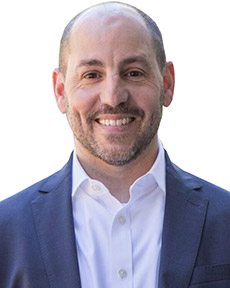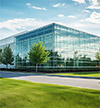As food systems, e-commerce, and pharma logistics evolve, cold storage is no longer a niche asset class — it’s mission-critical infrastructure. But modern facilities are still surprisingly scarce, especially in urban cores where demand is highest.
Ken Verne, vice president of asset management at Karis Cold, is helping reshape what cold storage looks like — and where it gets built. With a background in logistics and development, he brings an operator’s mindset to a sector facing pressure from both ends: aging supply on one side, and automation-ready users on the other.
In this conversation, Verne explains what’s driving demand, where the gaps are, and why the next generation of cold storage will need to think beyond the box.
Area Development: Let’s start with the basics. What’s driving the surge in cold storage development?
Ken Verne: It’s really a convergence of several forces. First, we’ve got long-term trends like population growth, increased demand for fresh and frozen food, and the growth of pharmaceutical products that require temperature control. Then you layer on shorter-term drivers like supply chain reconfiguration, just-in-case inventory models post-COVID, and the rise of grocery delivery and meal kits. All of that has pushed the sector from “specialty” to essential.
AD: You’ve said the existing stock of facilities isn’t keeping up. What’s the biggest constraint?
Verne: Most of the cold storage facilities in operation today are 20, 30, even 40 years old. They weren’t designed for modern distribution requirements, they lack zoning flexibility, and many are located far outside urban cores. So, you’ve got this gap: The end-user demand is shifting toward cities, but the infrastructure isn’t there yet because of the outdated facilities. And when you try to build new facilities in those zones, you run into permitting hurdles, energy constraints, and land scarcity.
AD: Is the urban infill model scalable? Or does it only work in certain cities?
Verne: It depends. Urban infill cold storage is absolutely viable in large metro areas with tight delivery timelines — Chicago, Los Angeles, Dallas, New York, Miami. But it’s hard to pull off. You need the right site, the right entitlement path, and the right capital stack. At Karis, we’re bullish on it because the long-term demand is so strong. But we also build in peripheral markets where greenfield development can deliver speed and scale.
AD: Let’s talk specs. What do modern cold storage users want that legacy buildings can’t offer?
Verne: Three big things: clear height, flexibility, and energy efficiency. We’re building to 50-foot clear heights to support dense racking and potential automation systems. We’re zoning temperature ranges so users can handle multiple product types under one roof. And we’re engineering insulation and refrigeration systems for performance and sustainability. Today’s tenant wants a building that supports their growth, not limits it.
AD: What role does automation play in cold storage strategy now?
Verne: Labor in cold environments is expensive, turnover is high, and throughput needs are only increasing. Automation is expensive because it requires infrastructure — height, power, slab strength, IT redundancy. For certain operators, automation can be a strategic advantage that differentiates them from their competition.

AD: How is investor sentiment around cold storage changing?
Verne: We’re seeing a lot more institutional capital flow into the space. Investors recognize that cold is not just industrial — it’s essential infrastructure. It serves food, healthcare, and agriculture. There’s real interest in build-to-suit projects and long-term leases with credit tenants. But there’s also caution; it’s a specialized asset class with higher capex and operational complexity.
AD: How do you approach ESG or sustainability in a facility that consumes a lot of energy by nature?
Verne: You start with efficiency: high R-value panels, LED lighting, smart temperature monitoring. Then you look at site strategy — can you integrate solar, battery storage, or next-gen refrigerants? You also think about your place in the community. Industrial users have a responsibility to build well, not just build fast. That includes architecture, noise reduction, and yes, even aesthetics.
AD: Speaking of aesthetics — you integrated a public art installation into your most recent Chicago project. Why?
Verne: Because industrial development doesn’t have to be invisible. If you’re putting up a 100,000-square-foot facility in a city neighborhood, people will see it every day. We worked with an internationally recognized muralist, David Banegas, to create a facade that tells a story about Chicago’s identity. It’s functional and beautiful. That’s the future.
AD: Final question: What’s the biggest blind spot you see among cold storage developers or users today?
Verne: Probably underestimating how fast the sector is changing. If you’re designing a facility based on five-year-old specs, it may be obsolete on day one. You’ve got to be thinking about 2030 — automation, power availability, multitenant flexibility, ESG compliance. The winners will be those who build for what’s next, not just what’s now.


